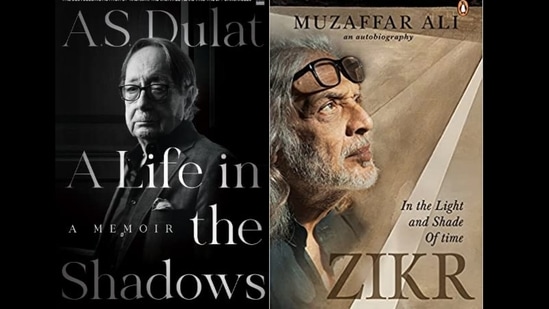Just Like That | Notes on a simpler time, and the life & times of two great men
On what 19th century Delhi did in the winter months, and the launch of great Indian spook AS Dulat's and filmmaker Muzaffar Ali's memoirs.
Delhi has had a particularly cold winter this year. There were days when the temperature dipped to almost zero, and in some parts of the northern Indian plains, a thin formation of ice could be seen in the mornings. Unlike in much colder countries, people in India are not used to such freezing temperatures, nor are prepared for them.

But in the 19th century, there was one positive aspect of extremely cold weather in Delhi. It helped to make ice, which in an era without refrigerators, was exceptionally scarce and thus much in demand both by the British — who were the de facto rulers of Delhi after 1803 — and the last vestiges of the Indian nobility. Ice was made laboriously during the winter months. On the coldest nights of December and January, the specialised community of ice-makers would be at work between the Turkman and Delhi gates, keeping water in shallow earthen receptacles out under the frosty sky. By morning a thin layer of ice would form, which was then beaten together and stored in ice pits deep underground, to be opened only at the beginning of summer. For all the attempts to preserve it, a good deal of the ice did melt in summer, and what remained was both in short supply and expensive. In one of his couplets, the great poet Mirza Ghalib (1797-1869), in his usual tongue-in-cheek style comments:
The means to sustenance and shelter
From where shall I get?
The many necessities for comfort
From where shall I get?
I too have faith in the Roza fast but yet
A khus-cooled room and iced-water
From where shall I get?
So much change has telescoped in such a short time that it is difficult to imagine how different life was not too long ago. Today we live in an era of instant communication through email and social media, and even writing letters has become near obsolete. But just as ice was a novelty, so was the old-fashioned postbox when first introduced. It amazed people that by putting a letter inside an impersonal postbox it would miraculously reach its destination. Again, it is Ghalib who expresses his incredulity and disbelief. He was a prolific letter writer, and in one of them writes:
‘The post office department has gone all to pieces…..Now they’ve put a big box in the post office. It has an open mouth, and anyone who wants to post a letter can go and drop it in the box and come away. No receipt, no stamp, no evidence of posting. God knows whether the letter will be dispatched or not. And, if it doesn’t arrive, the sender has nothing to base his claim on, not, that is, unless he pays four annas extra and sends it registered; and we send off letters all over the place practically every day. Where are we going to get eight annas and more to register them all? In short, sending off a letter is a headache; it’s asking for trouble. It’s like shooting an arrow in a dark room. If it hits, it hits, and if it misses, it misses’.
Today, when we open our refrigerators and take out ice, or send an email that instantaneously reaches any part of the globe, it is worth remembering that only about 150 years ago, these would have been considered a miracle that no one would have believed in. Even the rajas and maharajas, who had every kind of luxury, did not have such facilities. It is a different matter whether, despite such facilities which we take for granted, we are happier today, or were more content when things were so scarce and life was simple and uncomplicated.
The launch of two new books
Last week saw the launch of two very interesting and readable books. The first is by spy-master and head of the erstwhile external intelligence agency, Research and Analysis Wing (R&AW), AS Dulat, titled A Life in the Shadows. No Indian spook has, until now, written a memoir, and Dulat is the first to do so. It makes for a very good read.
The second book launch was also a memoir, written by renowned filmmaker, Muzaffar Ali, the maker of cinematic masterpieces like Umrao Jaan Ada. The book is called Zikr: In the Light and Shade of Time. Muzaffar is a man of great talent and many parts: Prince (from the house of Kotwara), filmmaker, poet, philosopher, automobile aficionado, and artist. Above all, he is the symbol of the elegant Awadhi culture and an ardent proponent of Sufism.
Both Muzaffar and his wife Mira are close friends. So are Dulat and his wife Paran. Their book launches were on the same day at the same time at two different — but fortunately close to each other—venues. I had to be present at both, and somehow managed to do so, with some adroit division of work. Renu, my wife, stayed on for Muzaffar’s launch, and I went on to Dulat’s. I was amused to see that this is exactly what former vice-president of India, Hamid Ansari, had also done. His wife was at Muzaffar’s event, and he was at Dulat’s.
Pavan K Varma is author, diplomat, and former Member of Parliament (Rajya Sabha).
Just Like That is a weekly column where Varma shares nuggets from the world of history, culture, literature, and personal reminiscences with HT Premium readers
The views expressed are personal
All Access.
One Subscription.
Get 360° coverage—from daily headlines
to 100 year archives.



HT App & Website







